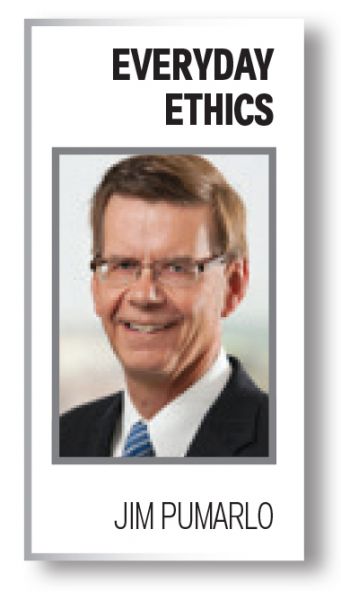Political advertising: Don't forget the 'ask'
Jim Pumarlo
Feb 4, 2014

Another election season is under way, and newsrooms are gearing up for campaigns that last weeks and even months. Coverage will consume the news pages from candidate profiles and community forums to photo requests and letters to the editor. And don’t forget the steady barrage of press releases.
Step-by-step coverage of political campaigns likely prompts more than one publisher to utter: Why are we giving the candidates all this free publicity? Where are their ads?
A first response: Have you approached the candidates? Better yet, are you prepared to pitch an ad campaign?
In other words, does your newspaper have a plan to introduce yourselves to the candidates and promote how you can generate attention for their campaigns?
It’s important to remember that many candidates are novices to the political arena, especially when it comes to launching and running a campaign. This is especially true in local campaigns. Newspapers have an opportunity to be a key adviser in how they organize and spend their advertising dollars.
One of the first orders of business in organizing election coverage is convening a joint meeting of the news and advertising staffs. Reporters can familiarize sales representatives with the candidates and the issues. Ad reps can likely provide some valuable information for the news staff, too.
Here is one checklist as newspapers prepare to pitch political advertising. Convene a brainstorming session, and you’ll likely generate more ideas:
• Introduce yourself to the candidates. Make an appointment to connect face-to-face as soon as they announce their candidacies.
• Familiarize yourself with the races and the issues. News and advertising departments should connect early in the election cycle and communicate regularly. Adjust ad campaigns as the issues change.
• Assign ad reps to specific races so they are comfortable with the candidates and the dynamics of the race.
• Understand who controls the advertising dollars. In local races, candidates themselves may oversee all aspects of the campaign. As you ascend the political ladder—legislative and congressional races, for example—most candidates may have campaign managers who control the purse strings.
• Be aware of key advertising opportunities for maximum exposure for the candidates. For example, when will candidate profiles be published? Will the newsroom be covering specific candidate forums? Identify the editions when the reports will appear. Will a Voter Guide be produced?
• Organize your own candidate forum and seek sponsors.
• Develop advertising packages. Present candidates with the spectrum of opportunities from print editions to audio and video on the Web to social media channels. Present yourself as a one-stop-shop for their advertising needs.
• Create a separate tab on your website for election coverage. Promote advertising and candidate messages here as well.
• Be aware of legislative and/or congressional seats in targeted or swing districts. Extra advertising dollars may be available from the respective political parties or special-interest groups.
• Know your market share. Most community newspapers are the primary source of local news; make the argument that candidates should divide their advertising dollars accordingly.
Promoting a candidate is no different than promoting a new store or a new product. Candidates stand their best chance of securing votes if they are in front of their constituencies early and often. A successful advertising campaign will introduce the candidates and underscore what they bring to the table for their constituencies, the voters.
In that regard, newspapers should be unabashed in promoting their ability to deliver those votes. Even in today’s fractured media landscape, community newspapers remain the primary source of local news. That’s underscored by MRI—Survey of the American Consumer: “Nationwide, newspapers have been ranked as the media used most by the ‘Influential’ community. Local newspapers, overwhelmingly, still hold the largest share of the adult audience in their market compared to any other local media.”
You should be first at the doorstep of the candidates, announcing why your newspaper is in the best position to deliver consistent and credible messaging for their campaigns. © Jim Pumarlo 2014
Jim Pumarlo writes, speaks and provides training on community newsroom success strategies. He is author of “Journalism Primer: A Guide to Community News Coverage,” “Votes and Quotes: A Guide to Outstanding Election Coverage” and “Bad News and Good Judgment: A Guide to Reporting on Sensitive Issues in Small-Town Newspapers.” He can be reached at www.pumarlo.com and welcomes comments and questions at jim@pumarlo.com.






